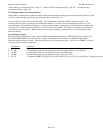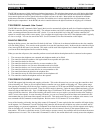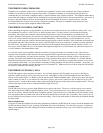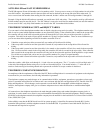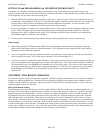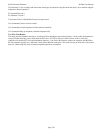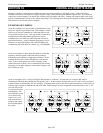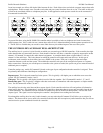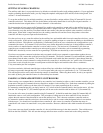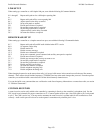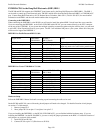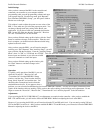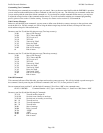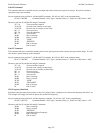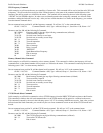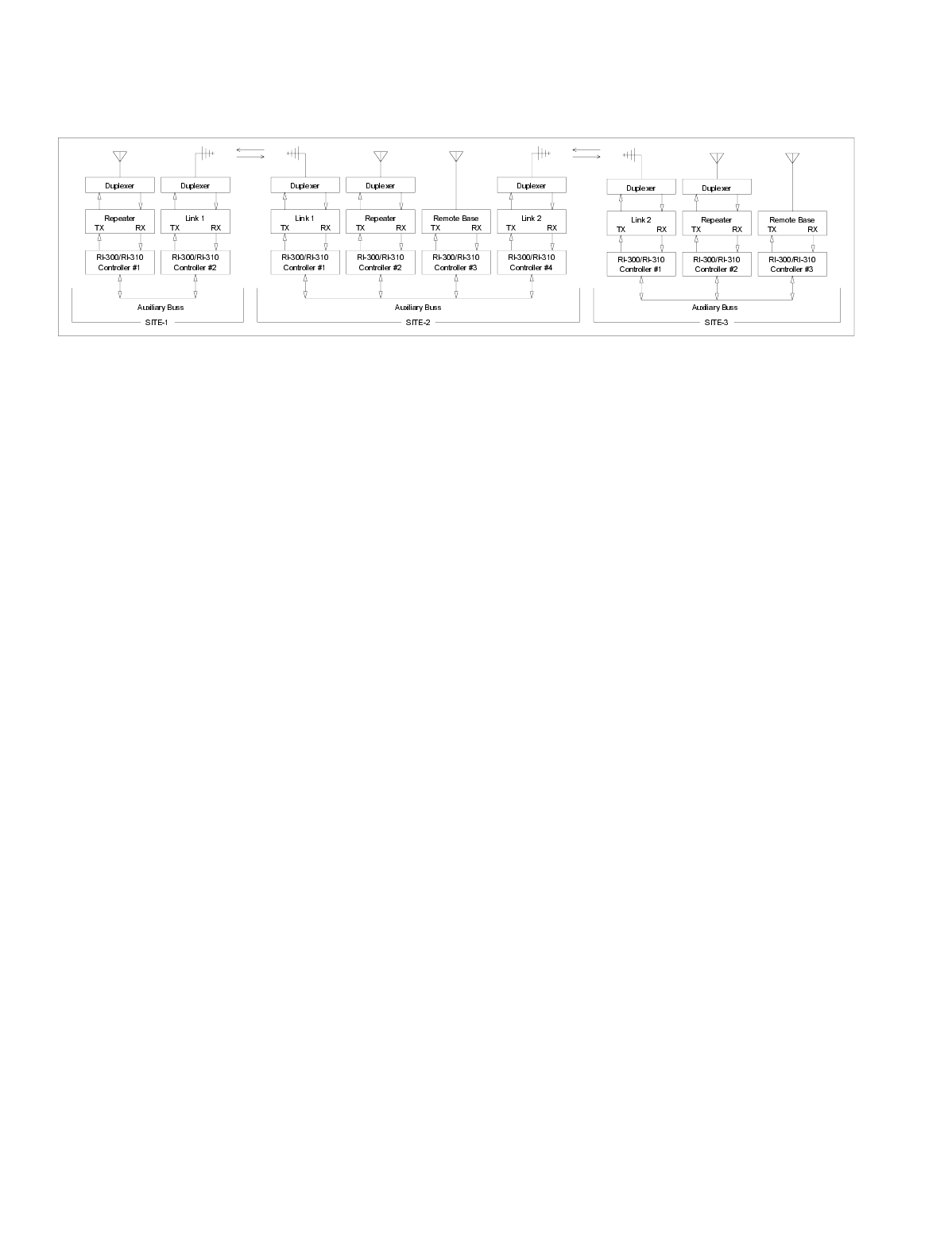
Pacific Research Solutions RI-300e User Manual
Page 121
In our last example, we will use full duplex links between all sites. Each of these sites can include a repeater, remote base radio
and telephone. In this example, users can talk to each other and pass control functions from site to site. The traffic on this type
of link can be considered similar to a telephone party line. In this application, each repeater at each site can be connected or
disconnected from the links.
In systems like these, using the RI-300/RI-310 controller makes it possible to both use telephones and control remote base
radios between sites. Site 1 could even use a remote base radio on site 3 without interfering with the repeater operation of site
2. The RI-300 is so flexible that you can add or move links from any site without impact to the rest of the system.
THE CONTROLLER’S AUXILIARY BUSS ARCHITECTURE
The auxiliary buss is a passive, 16-pin flat cable on which you can attach up to 8 RI-300 controllers. Each controller has eight
audio channels that are connected to the buss. Each channel of the buss will have a controller assigned to output audio on that
channel. S-Command 39 controls this audio channel assignment. A controller that has been assigned address 1 will use
channel 1 of the audio buss. This is the channel on which the controller will output audio onto the buss. In this type of
architecture, each controller on the auxiliary buss acts a PORT to the system. Each port is simply an input and output
connection between a radio and the system. Then within the controller, each port can be configured to operate as a repeater,
link or remote base. Because you can add ports or controller to the system as needed, the system can grow to meet the needs of
additional ports as required.
Controller settings vary, mainly S-Command 01, based on the type of port configuration that the controller is assigned. There
are primarily three different controller/port configurations.
Repeater port:
This is the main controller for the system. This is typically a full duplex port on which the users access the
system. See S-Command 01 modes 1 and 3.
Link port:
This is typically a full duplex port that is used to link sites together. See S-Command 01 modes 1, 2, 3 and 5.
Remote Base port:
This is typically a simplex radio that can be used to communicate with other repeaters or simplex mobile
users. See S-Command 01 modes 5, 6 and 7.
The auxiliary buss also has serial data and buss request signals. Each controller on the bus will send packets of information
about itself to the buss. This information is used by other controller to determine when to accept and pass audio from the buss
to their transmitter. S-Commands from one controller to another may also be included in these packets. The buss has a buss
request signal. This signal is used to help keep the controller’s data packets from crashing into each other.
Even though the auxiliary buss has only 8 audio channels, you may notice that S-Command 39 will allow you to assign a 9
th
address. This feature allows you to attach a 9
th
controller to the buss that will not require any audio interaction but you still can
send and receive system commands from this 9
th
controller.



